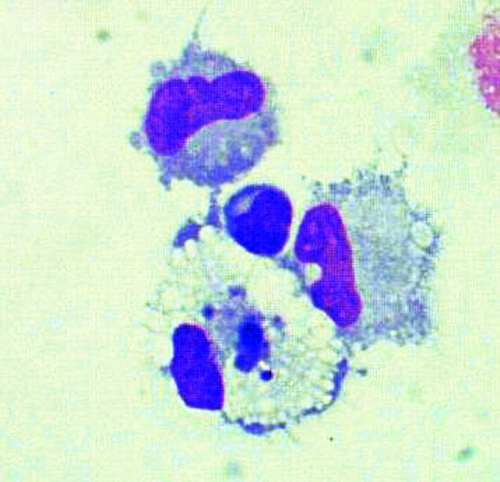Difference between revisions of "Cytology Q&A 13"
Jump to navigation
Jump to search
Ggaitskell (talk | contribs) |
|||
| (2 intermediate revisions by 2 users not shown) | |||
| Line 1: | Line 1: | ||
| − | {{Template:Manson}} | + | {{Template:Manson |
| + | |book = Cytology Q&A}} | ||
| − | [[Image:|centre|500px]] | + | [[Image:Cytology 13.JPG|centre|500px]] |
<br /> | <br /> | ||
Latest revision as of 17:57, 28 September 2011
| This question was provided by Manson Publishing as part of the OVAL Project. See more Cytology Q&A. |
Abdominal fluid is aspirated from a 14-year-old neutered male Labrador-cross dog. Analysis reveals: TP = 10 g/l; erythrocytes = 10 × 109/l; NCC = 0.4 × 109/l. A cytospin preparation is prepared and smears made.
| Question | Answer | Article | |
| What cell types are seen (Wright–Giemsa, ×100 oil)? |
There was a low density of nucleated cells in the cytospin, a finding that would be expected based on the NCC. |
Link to Article | |
| How would you classify this fluid? | A transudate. |
Link to Article | |
| What considerations/comments would you have regarding this classification? | Transudates are classically associated with hypoproteinaemia/hypoalbuminaemia. Albumin levels are usually <15–18 g/l before effusion will form due to hypoalbuminaemina alone. |
Link to Article | |
